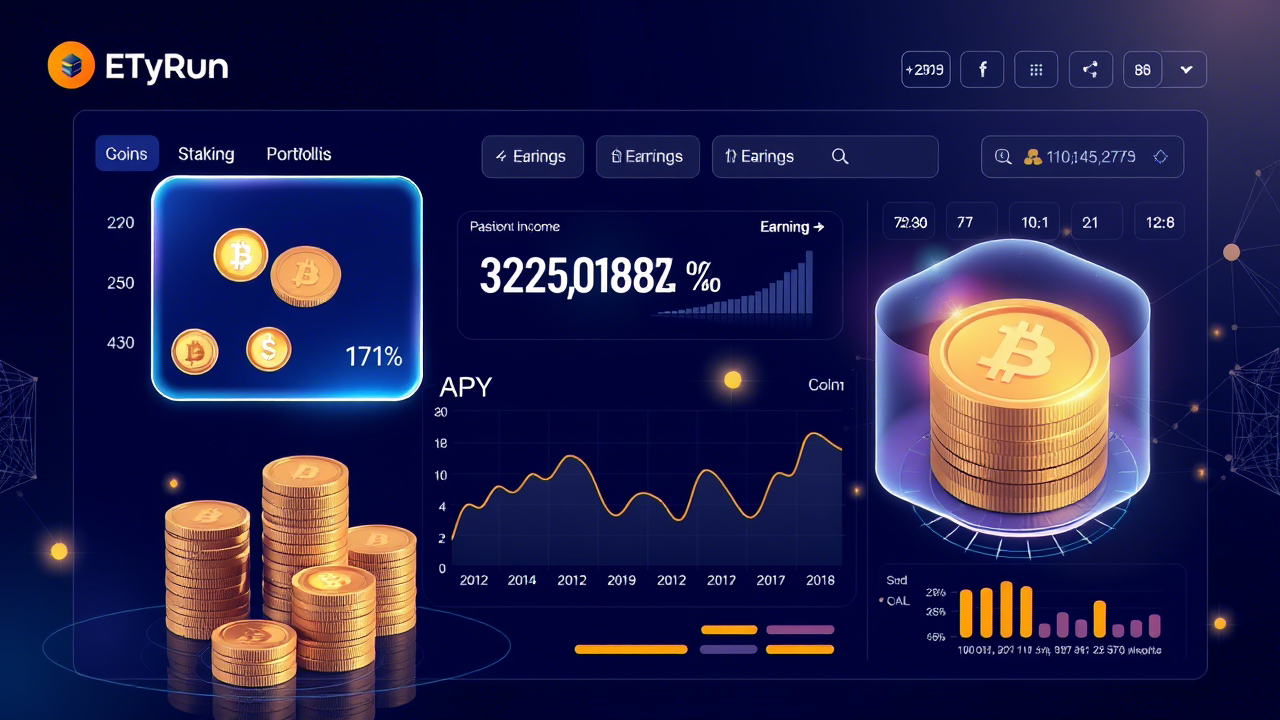Cryptocurrency markets are famous for their wild swings and emotional surges. For students, young professionals, entrepreneurs, and investors, understanding these emotional tides is crucial for making smart decisions and building long-term wealth. In 2025, platforms like CryptoPanic, TradingView, and CoinMarketCap are not just data hubs—they’re windows into the collective mood of the crypto world. By learning how to read these signals, you can avoid panic selling, spot opportunities, and build a strategy that works in both bull and bear markets.
The Power of Market Sentiment in Crypto
Emotions drive markets as much as logic does—sometimes even more. In crypto, where news spreads instantly and prices can double or halve in days, investor sentiment becomes a powerful force. Platforms like CryptoPanic aggregate news, social signals, and community reactions, giving you a real-time pulse on what traders are feeling. By tracking these emotions, you can better navigate volatility, avoid herd mentality, and make decisions based on insight rather than impulse.
Bull and Bear Markets: The Emotional Rollercoaster
Bull and Bear Market Definition
A bull market is a period when prices are rising or expected to rise, fueled by optimism, confidence, and strong demand. In contrast, a bear market is marked by declining prices, pessimism, and widespread fear. These terms aren’t just labels—they reflect the mood of millions of investors.
Bull and Bear Meaning
The terms “bull” and “bear” come from the way these animals attack: bulls thrust their horns upward (rising prices), while bears swipe their paws downward (falling prices). This symbolism captures the emotional highs and lows that define crypto cycles.
Why Is It Called a Bear Market?
Historically, the bear’s downward swipe became associated with falling markets. The term stuck, and today it represents periods of declining confidence, increasing caution, and often, panic selling.
Bulls and Bears Trading
Traders use these terms to describe their strategies: bulls buy in anticipation of gains, while bears sell or short assets, expecting declines. Understanding which “animal” dominates helps you read the market’s emotional climate.
CryptoPanic: The Market’s Emotional Barometer
What Is CryptoPanic?
CryptoPanic is a real-time news aggregator and sentiment analysis platform for cryptocurrency markets. It pulls news, social media posts, and community reactions from across the web, organizing them into a single, easy-to-use dashboard. The platform’s unique value lies in how it captures and quantifies market emotions—turning chaos into actionable insight.
CryptoPanic News: Real-Time Market Mood
The CryptoPanic news feed is a curated stream of breaking headlines, project announcements, regulatory updates, and social sentiment. By tracking which stories trend and how users react (bullish, bearish, important, or “fud”), you get a snapshot of the market’s emotional state.
CryptoPanic App: Sentiment in Your Pocket
The CryptoPanic app brings this emotional dashboard to your mobile device. With push notifications, customizable alerts, and instant access to trending news, you can monitor market mood on the go—crucial for fast-moving markets where emotions shift in minutes.
CryptoPanic API: Building Custom Sentiment Tools
For developers, the CryptoPanic API offers direct access to the platform’s data. By integrating news, sentiment scores, and trending topics into your own dashboards or trading bots, you can automate emotional analysis and build smarter strategies.
CryptoPanic API Key: Unlocking Data Access
To access the API, you’ll need a CryptoPanic API key. This secure token allows you to pull news, reactions, and sentiment data programmatically—ideal for building custom research tools or automating trading decisions.
How CryptoPanic Measures and Visualizes Emotions
CryptoPanic Emotions in Bull & Bear Markets PDF
CryptoPanic’s analytics often feature in educational resources and market reports, including PDFs that dissect how emotions shift during bull and bear cycles. These documents break down:
- Volume of bullish vs bearish news
- Frequency of “fud” (fear, uncertainty, doubt) tags
- Correlation between news spikes and price moves
By studying these patterns, you can anticipate emotional turning points and adjust your strategy accordingly.
CryptoPanic Telegram and Social Integration
The CryptoPanic Telegram channel extends sentiment tracking to messaging apps, offering real-time alerts and community discussions. This integration keeps you connected to the market’s emotional pulse—even when you’re away from your main dashboard.
CryptoPanic Reddit and RSS
For deeper dives, CryptoPanic Reddit threads and CryptoPanic RSS feeds deliver curated discussions and news directly to your preferred platforms, ensuring you never miss a shift in sentiment.
CryptoPanic Pro: Advanced Sentiment Analysis
CryptoPanic Pro unlocks premium features like advanced filters, historical sentiment analysis, and customizable alerts. For serious traders and researchers, these tools provide a granular view of how emotions evolve over time.
Comparing Sentiment Tools: CryptoPanic, TradingView, CoinMarketCap, and Coinglass
While CryptoPanic excels at aggregating news and user reactions, it’s part of a broader ecosystem of sentiment tools:
- TradingView: Known for its charting and social trading features, TradingView lets users share ideas, vote on market direction, and discuss trends—adding another layer of sentiment analysis.
- CoinMarketCap: Beyond price tracking, CoinMarketCap displays community votes and trending coins, helping you spot shifts in investor mood.
- Coinglass: Specializes in derivatives data, funding rates, and liquidations—metrics that often reflect extreme bullish or bearish sentiment.
By combining these tools, you get a multi-dimensional view of market emotions, from news-driven panic to technical trader optimism.
Bull and Bear Market in India: Local Emotions, Global Impact
India’s crypto community is uniquely emotional and reactive, influenced by local regulations, global trends, and social media buzz. During bull markets, optimism surges across Telegram groups and YouTube channels, driving retail participation. In bear markets, fear spreads quickly, often amplified by regulatory uncertainty or negative news.
Platforms like WazirX and CoinDCX, which support INR trading, experience dramatic swings in volume and sentiment during these cycles. For a detailed comparison of Indian exchanges, see Best Crypto Exchanges in India: Compare Guide 2025.
Is a Crypto Bull Run Coming? Reading the Emotional Signals
Predicting the next bull run is part science, part art. By monitoring CryptoPanic’s bullish news spikes, TradingView’s sentiment charts, and CoinMarketCap’s trending coins, you can spot early signs of renewed optimism. Look for:
- Surge in positive project announcements
- Increasing “bullish” votes and reactions
- Rising trading volumes and Google search trends
However, beware of false positives—sometimes, excessive optimism signals a market top rather than a new rally.
Is the Market Bullish or Bearish Today? Real-Time Sentiment Tracking
CryptoPanic’s dashboard offers a real-time snapshot of market mood. By filtering news by sentiment, you can see whether the community is leaning bullish or bearish at any moment. Combine this with TradingView’s live charts and Coinglass’s funding rates for a comprehensive view.
For those new to sentiment analysis, Crypto Market Cycles: How to Navigate Volatility offers an accessible introduction.
Case Study: How Emotions Drive Real-World Decisions
Consider a young investor in Mumbai, tracking Bitcoin during a volatile week. CryptoPanic shows a spike in bearish news following a regulatory announcement. On TradingView, sentiment turns negative, and trading volumes drop on WazirX. Instead of panic selling, the investor reviews historical patterns using CryptoPanic Pro, noticing similar news spikes often precede rebounds. By staying calm and informed, they avoid losses and even buy at a discount when the market recovers.
This case highlights the value of sentiment tools in managing emotions and making rational decisions.
Crypto in Humans: Symptoms of Emotional Investing
Emotional investing is a universal challenge—especially in crypto. Symptoms include:
- Panic selling during sudden drops
- FOMO (fear of missing out) buying during rallies
- Obsessively checking prices and news
- Reacting to rumors or unverified headlines
Platforms like CryptoPanic help counter these impulses by providing context, historical data, and community feedback.
Visualizing Market Sentiment: Bull and Bear Photo
Images of bulls and bears often accompany market reports, symbolizing optimism and fear. These visuals reinforce the emotional narrative, reminding investors that markets are driven by collective psychology as much as by fundamentals.
Building Your Sentiment Dashboard: Integrating CryptoPanic API
For advanced users, integrating the CryptoPanic API with other tools like TradingView and Coinglass creates a custom sentiment dashboard. With an API key, you can automate news tracking, sentiment scoring, and even trigger trades based on emotional shifts.
Developers can find detailed documentation on the CryptoPanic API page, while non-coders can use the app and Telegram integrations for instant access.
The Future of Sentiment Analysis in Crypto
As AI and machine learning evolve, sentiment analysis will become even more sophisticated. Platforms may soon predict emotional turning points before they happen, giving investors an edge in both bull and bear markets. For now, mastering tools like CryptoPanic, TradingView, and CoinMarketCap is the best way to stay ahead of the emotional curve.
Internal Resources for Deeper Learning
- Top Crypto Apps for Secure Trading and Portfolio Management
- Crypto Wallet: Everything You Need to Know Before Investing in Crypto
- Best Crypto to Buy Now: Smart Investment Strategies for 2025
- Crypto Trading Strategies That Actually Work in 2025
- How to Buy Bitcoin: Complete Guide for Investors
FAQ
What is the bear and bull market in crypto?
A bear market in crypto is when prices fall and pessimism dominates, while a bull market is marked by rising prices and optimism. These cycles reflect the collective emotions of investors and influence trading behavior, making it essential to recognize and adapt to each phase.
Is a crypto bull run coming?
Predicting a bull run is challenging, but rising positive sentiment across platforms like CryptoPanic and TradingView, along with increased trading volumes, can signal renewed optimism. Always combine sentiment analysis with fundamental research before making investment decisions.
What is the difference between a bull and a bear market?
The main difference is direction and mood: a bull market features rising prices and investor confidence, while a bear market is defined by falling prices and widespread caution or fear. Recognizing these patterns helps investors adjust their strategies accordingly.
Why is it called a bear market?
The term “bear market” comes from the way a bear attacks, swiping its paws downward. This imagery represents declining prices and negative sentiment, capturing the emotional tone of markets during downturns.
Is the market bullish or bearish today?
Market sentiment changes rapidly. Platforms like CryptoPanic provide real-time news and user reactions, helping you gauge whether the mood is bullish or bearish. Always check multiple sources for a balanced view before making decisions.
Final Thought
Understanding investor emotions is as important as analyzing charts or reading whitepapers. Platforms like CryptoPanic, TradingView, and CoinMarketCap offer powerful tools to decode market sentiment, helping you avoid costly mistakes and seize opportunities in both bull and bear markets. By combining emotional awareness with solid research, you can build a resilient strategy for the ever-evolving world of crypto.
References:












Leave a Reply